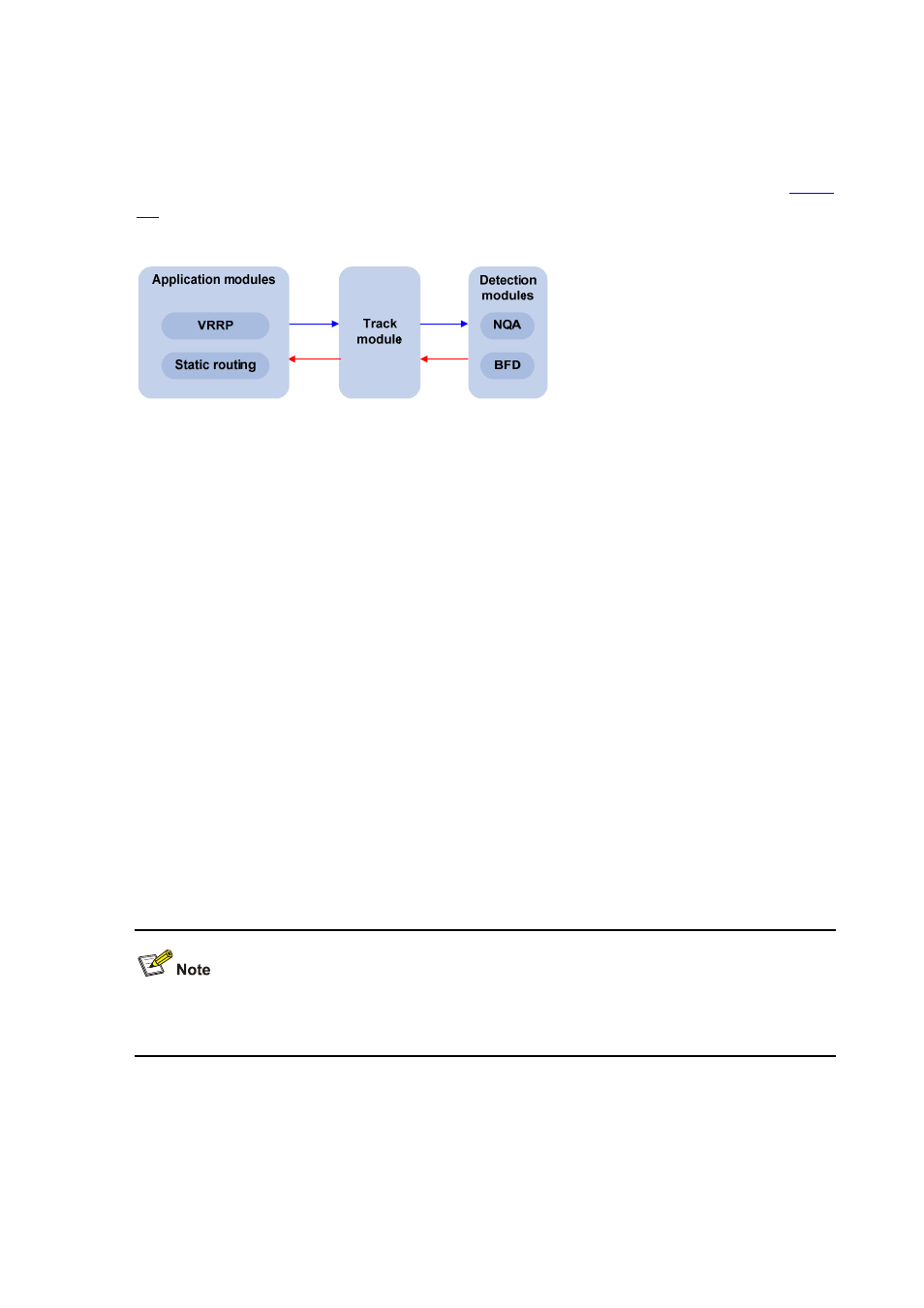Supporting the collaboration function, Supporting delivery of traps – H3C Technologies H3C S7500E Series Switches User Manual
Page 22

2-2
Supporting the collaboration function
Collaboration is implemented by establishing reaction entries to monitor the detection results of the
current test group. If the number of consecutive probe failures reaches a certain limit, NQA’s
collaboration with other modules is triggered. The implementation of collaboration is shown in
.
Figure 2-1 Implementation of collaboration
The collaboration involves three parts: the application modules, the track module, and the detection
modules.
z
The detection modules monitor the link status, network performance and so on, and inform the
track module of the detection result.
z
Upon receiving the detection result, the track module changes the status of the track entry
accordingly and informs the application modules. The track module works between the
application modules and the detection modules and is mainly used to obscure the difference of
various detection modules to provide a unified interface for application modules.
z
The application modules then deal with the changes accordingly based on the status of the track
entry, and thus collaboration is implemented.
Take static routing as an example. You have configured a static route with the next hop 192.168.0.88.
If 192.168.0.88 is reachable, the static route is valid; if 192.168.0.88 is unreachable, the static route is
invalid. With the collaboration between NQA, track module and application modules, real time
monitoring of reachability of the static route can be implemented:
1) Monitor reachability of the destination 192.168.0.88 through NQA.
2) If 192.168.0.88 is detected to be unreachable, NQA will inform the static routing module through
track module.
3) The static routing module then can know that the static route is invalid.
For the detailed description of the Track module, see Track Configuration in the High Availability
Configuration Guide.
Supporting delivery of traps
You can set whether to send traps to the network management server when an NQA test is performed.
When a probe fails or a test is completed, the network management server can be notified, and the
network administrator can know the network running status and performance in time through the traps
sent.
